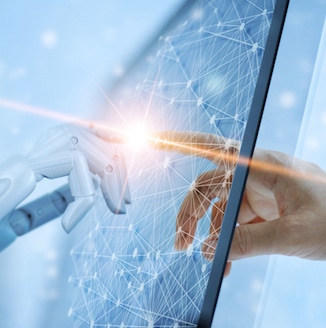
Many new technologies are being introduced these days into manufacturing operations, yet MES—which has been around for decades—is viewed as a foundational enabler of digital transformation. Technologies like augmented reality, artificial intelligence, cloud and edge computing, mobile, and auto-ID are being integrated into MES solutions. Likewise, smart machines, sensors, and IIoT platforms are expanding capabilities to integrate to enterprise systems like MES.
Regardless of rumors about the potential demise of MES solutions, the facts are that many of the functions and features provided by MES cannot be replaced by new IIoT platforms, even with analytics and apps. Alone, IIoT devices and platforms do not offer many new possibilities to manufacturers because they cannot provide operational context for data, cannot trigger actions in response to data, and are not designed to orchestrate processes across the factory and value chain. Many production processes need the human in the loop and MES provides that platform.
MES does not deliver Digital Manufacturing by itself. It needs to be integrated into the organization’s digital platform and “system of systems” including engineering, business, and automation systems. MES does provide these important features required to integrate Operations into the Digital Transformation strategy:
- Intelligent Insights. Raw data captured from machines and workers during production must be turned into information by adding context and organization. Context includes data about the product specifications, process step, people, and equipment involved in the activity when the datum—like a dimensional measurement or environmental condition—is captured.
Organization of stored data is also important to enable views that joins data from multiple activities for correlation and root-cause analysis. The organization of data makes it easier to aggregate data into significant metrics and key performance indicators (KPIs). It helps put the human in the loop to make better decisions quickly.
- Data Stewardship and Governance. A proliferation of custom apps in production can lead to a multitude of data silos that are not coordinated to facilitate integration and aggregation. The MES database provides de-facto governance, through its production-centric data model and integration interfaces, maintaining data clean, normalized, and organized to facilitate joins and searches across data in the enterprise.
- Standardization and Control. The MES manages and enforces every aspect of the work steps including equipment, materials, and data collection for automated and manual processes. MES enforces the policies and rules to make sure people and equipment are operating as they’re supposed to. The standardization makes production processes repeatable with consistent performance and quality.
- Responsive Action. MES functions include methods to handle exception-driven events during the production process. Events or incidents like a suspect defect or process anomaly. MES is the natural system to receive these types of notifications and alerts from an IIoT analytical platform. In MES, these triggers can initiate procedures to record a discrepancy, change the equipment settings or operator instructions based on an automatically detected condition.
- Connection and Digital Thread. MES provides an integration bridge between the plant and key enterprise systems including engineering’s PLM system, and procurement, inventory and cost management’s ERP system. This integration can be orchestrated to provide a digital thread linking the product’s engineering design specification to the product’s realization process, and even the product’s sustainment services in a way that facilitates the maintenance of a digital twin for each physical product unit.
The digital thread and digital twin can provide many benefits including better data exchange across the enterprise, and capability to analyze the product design against actual performance for continuous improvement. The digital thread accelerates the introduction of new products and variations by making it easier to implement design changes into downstream production definition elements like inspection requirements, machining programs, and work instructions.
The need for more real-time factory data and enterprise-wide connectivity is refueling the interest in MES. IIoT technologies are a great addition to the manufacturing IT landscape however, for the reasons listed above, MES is needed more than ever as a foundational piece to the Digital Manufacturing strategy.

